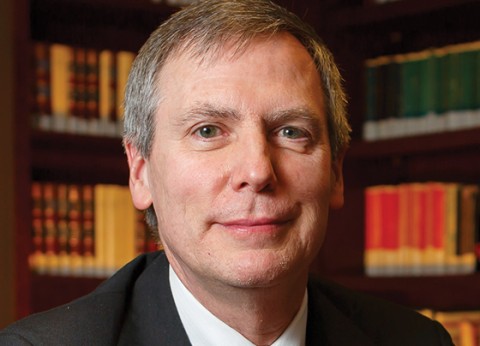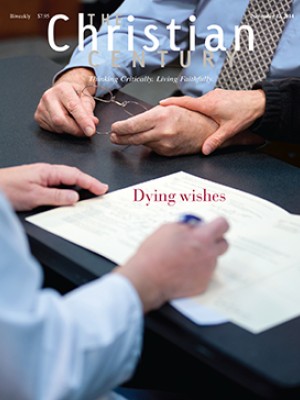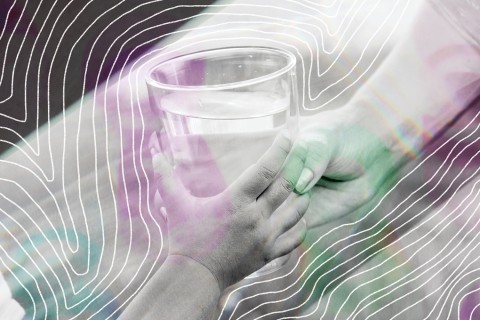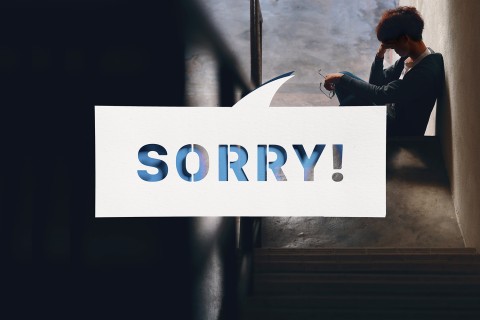Can doctors help us die well? Physician-ethicist Daniel Sulmasy

Daniel Sulmasy is an internist and an ethicist, and he was a Franciscan friar for 25 years. He continues to practice medicine while teaching at the medical school and the divinity school of the University of Chicago. He has focused much of his research on the ethics of end-of-life decision making. He has served on numerous governmental advisory committees and was appointed by President Obama to the Presidential Commission for the Study of Bioethical Problems. His books include The Healer’s Calling (1997), Safe Passage: A Global Spiritual Sourcebook for Care at the End of Life (2013), and Francis the Leper: Faith, Medicine, Theology, and Science (2014).
Has medicine gotten any better at facing up to death and allowing people to die a “good” death?
If you take a long view, the answer is very much yes. Around the middle of the last century, when medicine’s technological prowess exploded, there was suddenly a lot that could be done to prolong a person’s life. The instinct of physicians was to use that new power indiscriminately. And the attitudes of physicians were somewhat paternalistic. They didn’t pay much attention to the preferences of a patient. In a humane but nonetheless paternalistic way, they looked to improve the medical condition and keep patients alive without much regard for the quality of life, the side effects, and the burdens associated with it.
Read our latest issue or browse back issues.
There has been real improvement in attending to patients’ desires at the end of life. The groundswell of the hospice movement was significant. The rise of palliative care as a medical specialty has been important. In general, we are better equipped, even from a technical point of view, to deal with patient symptoms than we have ever been in the history of humankind.
On the negative side, we are now in a schizophrenic position. There are still people who treat patients like they were treated in 1962, keeping them alive no matter what they say. On the other extreme has been a rise in the call for assisted suicide to be legalized. Orthogonal to both of those movements has been an increasing number of people and family members who demand treatments even when doctors say that treatment will be damaging or worthless. This has become the most common reason for ethics consultation today.
Have doctors gotten any better at having those conversations?
They have become more aware of the need for it. The conversations still happen too late, however—at the last minute—instead of prospectively engaging the family and the patient earlier. The time pressures on physicians have become more and more extreme. On the surface, it looks like the default mode—just keep on treating—is the most efficient. You don’t have to spend half an hour talking with the family about these weighty issues. You do your rounds in ten minutes, write the order, and move on.
There is economic pressure on physicians to see more patients and spend less time with each. The “death panel” controversy that erupted a couple of years ago arose because of the suggestion that there ought to be a billing code that a doctor could use to charge for such a conversation. This provision would at least have removed the economic barrier to such a conversation.
I don’t think, however, that ignoring these conversations is really time efficient. A doctor might say, “I don’t have half an hour to sit with a patient,” but then spend four weeks visiting the patient and attending to an agonizing and protracted death that might have happened more humanely if he had simply sat down with the patient for a conversation.
How did these issues become important to you?
In medical school I made a diagnosis that a woman with breast cancer had a metastatic tumor pressing on her spinal cord. I was very proud that I had ordered the test to confirm this. I was in the patient’s room when a neurologist walked in in his long white coat with his trailing entourage of medical students and residents in their shorter white coats. He walked up to the woman and said, “Lady, you’ve got a big, fat tumor stuck to your spinal cord. We are going to have to give you some radiation so you won’t get paralyzed, OK?” And then he walked out of the room.
That left me, the most junior person, with a frightened, tearful woman, trying to shore up the mess that had been created by insensitive communication. Experiences like that led me to think about dedicating my life to making medicine better.
I also had some positive experiences that taught me that caring for patients at the end of life can be incredibly rewarding. For me, it is spiritual. If I walk into the room of a patient who is dying in faith, in hope, and in love, they are teaching me what it means to be human. I feel I need to take my shoes off when I enter the room of a person like that. It is that holy.
How do you combine good medical care, medical ethics, and pastoral care?
Medical ethics and pastoral care are not separate. A few years ago, I had a patient who was comatose and clearly dying. He was an African-American man whose wife was not willing to authorize withdrawal of care. This was a dilemma for the staff, who felt that they were not helping the patient.
I did the ethics consultation. I spoke to the patient’s wife. I routinely ask about people’s faith commitments and sources of support. She revealed that she was a faithful, churchgoing Baptist. I asked if she wanted her pastor to be part of the ethics consultation. She said yes.
Usually in the midst of an ethics consult we’ll ask the family to leave the room so we can discuss our recommendation. This pastor stepped up and said at that point, “I would like to ask all of you to leave the room. Mrs. Jones and I are going to sit here and pray about this and talk it over.” He brought us back in when they were done. Mrs. Jones said, “I think God is calling my husband home. It’s OK for you to stop all these treatments.”
An ethics committee that is attuned to the pastoral care side of things and can work with the chaplains in the hospital or the patient’s own clergy is going to do a much better, more holistic job than if one thinks of these as separate worlds.
In the comment section of a recent piece in the New York Times on end-of-life care, one commenter wrote, “Surely, I have the right to determine what happens when I become terminally ill.” It is not a decision to be made by the “center for medical ethics.” How would you respond to this?
Sometimes people are fixated on control. That may reflect a bad experience that they have had or that a family member has had. I approach the issue sideways and say, “Tell me more about your experience that has led you to think this.” The philosophical problem for many people—maybe Americans especially—is a desire for control at the end of life. And that control is really illusory.
I was on a radio talk show once where a man said, “I need to have assisted suicide as an option. They are giving me all of this chemotherapy, and it is making me sick. I have a port in my chest that is getting infected. I am in pain all of the time.” He was dumbfounded when I said, “Why are you still getting chemotherapy? Why do you have that port in your chest? We can stop all of those things. We can allow you to die a natural death. We can use hospice and palliative care. We don’t have to ratify the sense that you as an embodied person have lost value to the point where your death is an aim of our action. We can accept your death, but we don’t have to cause it.”
This is an odd cultural moment. Both treatment at all costs and forced death as an “option” are happening with equal vigor in our society right now. This is the schizophrenia I was talking about. Aristotle’s doctrine of the mean could be useful here and help us find a less destructive path.
Five states now allow some form of “assisted dying” or “assisted suicide.” What lessons have been learned from the experience of doctors and ethicists in those states about death and dying?
Very few of the people who ask for assisted suicide do so because they have uncontrollable pain or other symptoms. It is more about their perception of being a burden on others, about a sense of a loss of control, about not feeling that they are at their best. They perceive themselves as being looked upon in ways they don’t want to be looked upon.
In the Netherlands, one sees “tiredness of life” given as a reason that people request assisted suicide. It is not because of excruciating pain that can’t be controlled any other way. Those are often the cases that are put forward in the media as reasons for assisted suicide, but in practice that doesn’t play as big a part as one might think.
When you look at the data, there have been slight increases in the number of people asking for assisted suicide—not huge leaps, at least in the United States. But in the Netherlands, which is decades “ahead” of the United States on this issue, you see real evidence of a slippery slope. Three percent of all deaths there are now caused by euthanasia or assisted suicide.
At first, euthanasia was illegal but not prosecuted. Next it became voluntary—you could ask for it. Then the Dutch tolerated nonvoluntary euthanasia, in which a person is not able to say whether they want it or not, but others can decide that it is in their best interest.
People who are severely demented are being euthanized—people who never said they wanted that. Children with birth defects are regularly being euthanized. Psychiatric indications are now springing up: “My depression is too much for me.” In one case in Belgium, a botched sex-change operation was the cause of a person saying that he wanted to end his life.
I think that it is too early to tell what will happen in the United States, but if you look to what is happening in Europe, you see where this might be going.
Are we headed the same direction?
There is more resistance in the United States, partly because we are a more religious country. And I think that there has been more resistance from physicians in the United States and the United Kingdom. I am coauthor of the position statement of the American College of Physicians, which opposes assisted suicide and euthanasia. The American Medical Association is opposed as well.
There is a debate here, certainly. There is an organized and well-funded movement that is seeking legalization of assisted suicide. While there are five states where such legislation has passed, there have been many more states where proposals for such laws have failed.
Does the distinction between allowing someone to die and taking an overt action to produce a death still mark a bright line for doctors and ethicists? Or does the line get blurred in practice?
By and large, every clinician senses the difference. Ethicists have done more to blur the line than clinicians.
In killing, I create a new lethal, pathophysiological state with the specific intention of having the patient die. The patient has no cyanide in their system, and I inject cyanide with the specific intention of causing their death.
Allowing to die means that I refrain from initiating a medical intervention or I remove a treatment which is preventing the progression of death due to a preexisting lethal pathophysiological condition.
The paradigmatic example in this country of allowing to die was the removal of the ventilator of Karen Ann Quinlan. Her family went to court to get her ventilator removed because they thought it was needlessly prolonging her life. When the ventilator was stopped, they had fulfilled their intention. But she continued breathing. The parents didn’t say, “Oh, we failed. Let’s get out a pillow and smother her.” She died years later. What matters in the distinction between killing and allowing to die is intention—whether the intention is to end the treatment or end the patient.
Technology has not blurred the distinction, but it has increased the burden of decision making on patients and their loved ones at the end of life. When there was no ventilator, you didn’t have to think about whether to remove it. The more treatments we have, the more decisions we have to make about what is more burdensome than beneficial. That has become a burden for patients, families, and physicians. But the distinction remains.
Many of the recommendations of a recent report by the Institute of Medicine are directed at reducing costs. The claim is that reducing costs can lead to better care at the end of life, not worse. With how much skepticism should we view this claim? Where is the line between reducing costs and having excellent care?
This is the most troubling part of the report. I don’t think we are going to get a lot of cost savings by improving care at the end of life. We might get some, but if so, that should be a happy side effect. The aim should be providing better care. The more people who are aware that they have the option not to pursue the many life-prolonging treatments, then the more who may decide not to do so, and I suppose that is a cost savings. But if it wound up that it cost more and that we had to pour more resources into hospice because of our aging population, that would still be a good thing, even if expensive.
We do a lot of unnecessary testing and treatment in this country, and not all of it at the end of life. I often ask students, “Why are you ordering that panel of 25 different blood tests for that healthy 20-year-old who came in for a physical?” “Well, I want to get a baseline.” “A baseline for what?” We are often not clear about what we are seeking. But the motive needs to be better care.
What is better care at the end of life?
We often so glorify individual choice that we think if we give a patient anything he or she wants, that is “good care.” I don’t think that is the case. I do think there is an awful lot of unnecessary suffering for patients at the end of life, and patients ought to be enabled to face their own finitude. Doctors need to be honest enough with patients to allow them to do that. As Paul Ramsey once said, “The purpose of medicine is not to relieve the human condition of the human condition.” Sometimes we seem to suggest to patients that we can.
If patients are more aware of the possibility of symptom control, if we create more space for conversation about meaning, value, and relationship, which are pastoral and spiritual questions that arise inevitably in care of the dying, then I think we will see the peaceable use of medical technology. Teams of social workers and chaplains can help provide the kind of environment in which patients can have less pain and more space to deal with their own mortality—their hopes and fears. That for me means better care at the end of life.
What are the primary spiritual questions at the end of life?
At the end of life, the primary spiritual questions are questions about meaning, value, and relationship. Questions about meaning echo down the centuries: Why me? Why my daughter? Can I make sense of my suffering? Questions of value arise: patients begin to question their own value. They are no longer productive in a society that overvalues productivity. They become disfigured in a society that overvalues image and youthfulness. And it is uncanny the way brokenness in body reminds patients of the brokenness in their relationships and their need for reconciliation. Sometimes these are the obvious questions to everyone except the doctors, who are worried about what the potassium level is.







